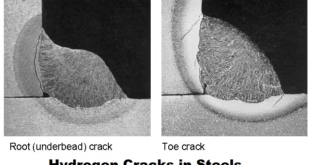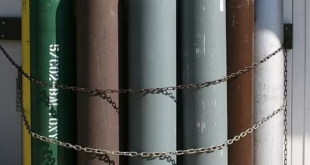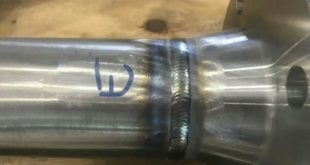Strategies for Creating a Highly Productive Welding Workplace
Introduction
In the realm of welding, productivity isn’t just a desirable trait; it’s a fundamental necessity. A highly productive welding workplace operates smoothly, efficiently, and with maximum output, resulting in higher quality work, reduced costs, and satisfied customers. Achieving such productivity levels requires a strategic approach and a commitment to excellence.
Importance of Productivity
Productivity serves as the backbone of any welding operation, playing a pivotal role in maintaining competitiveness and meeting client demands. In welding, where precision and speed are paramount, a lack of productivity can lead to missed deadlines, increased expenses, and compromised quality. Moreover, in an industry characterized by tight margins and fierce competition, maximizing productivity is essential for staying ahead of the curve and sustaining profitability.

Efficient Layout Design
In the realm of welding, the layout of a workplace can significantly impact productivity and efficiency. An intelligently designed layout not only enhances workflow but also promotes safety, reduces material handling time, and optimizes space utilization. In this section, we will explore the importance of efficient layout design in welding workplaces, focusing on organizing workstations for maximum efficiency, minimizing material handling time, and ensuring safety considerations.
Organizing Workstations for Maximum Efficiency
One of the fundamental aspects of efficient layout design in welding workplaces is the organization of workstations. Each workstation should be strategically arranged to facilitate smooth workflow and minimize unnecessary movements. Factors such as the proximity of welding stations to material storage areas, the arrangement of tools and equipment, and the layout of workbenches should be carefully considered to maximize efficiency.
Minimizing Material Handling Time
Material handling plays a crucial role in welding operations, and minimizing material handling time is essential for maximizing productivity. An efficient layout design should streamline the flow of materials from storage areas to workstations, reducing the time and effort required to transport materials between locations.
Ensuring Safety Considerations in Layout Design
Safety should always be a top priority in welding workplaces, and layout design plays a crucial role in ensuring a safe working environment. When designing the layout of a welding facility, it is essential to consider safety considerations such as fire hazards, ventilation requirements, and emergency exits.
Proper Equipment Maintenance
In the world of welding, the significance of well-maintained equipment cannot be overstated. Proper maintenance not only ensures the longevity and performance of welding machinery but also plays a pivotal role in enhancing productivity, minimizing downtime, and ensuring safety in the workplace. In this section, we will explore the importance of well-maintained welding equipment, the implementation of regular inspection and maintenance schedules, and the necessity of training employees on proper equipment care and maintenance.
Well-Maintained Welding Equipment
Well-maintained welding equipment is the cornerstone of a productive and efficient welding operation. Whether it’s welding machines, torches, electrodes, or protective gear, every piece of equipment must be in optimal condition to deliver consistent results and uphold safety standards. Malfunctioning or poorly maintained equipment not only compromises the quality of welds but also increases the risk of accidents, injuries, and costly rework.
Regular Inspection and Maintenance Schedules
Implementing regular inspection and maintenance schedules is essential for preserving the integrity and performance of welding equipment. A proactive approach to maintenance allows businesses to identify potential issues early on, address them promptly, and prevent costly breakdowns and repairs.
Training Employees
Equally important as implementing regular maintenance schedules is ensuring that employees are adequately trained in proper equipment care and maintenance procedures. Training programs should cover topics such as equipment operation, maintenance best practices, troubleshooting techniques, and safety precautions.
Employees should be familiarized with the various components of welding equipment, their functions, and the importance of routine maintenance. Additionally, they should be trained to recognize signs of equipment malfunction or deterioration and know how to respond appropriately to mitigate risks and prevent accidents.
Effective Communication Strategies
Effective communication is the lifeblood of successful welding projects. Clear and efficient communication not only ensures that tasks are completed accurately and on time but also fosters collaboration, minimizes errors, and enhances overall productivity. In this section, we will explore the importance of clear communication in welding projects, strategies for implementing regular team meetings and updates, and the utilization of communication tools for remote or large-scale projects.
Clear Communication in Welding Projects
Clear communication is essential in welding projects, where precision and accuracy are paramount. Miscommunication or ambiguity can lead to costly mistakes, rework, and delays, jeopardizing project timelines and budgets. Whether it’s conveying project specifications, coordinating tasks, or addressing safety concerns, effective communication is critical at every stage of the welding process.
Regular Team Meetings and Updates
Regular team meetings and updates are instrumental in keeping welding projects on track and ensuring that everyone is aligned with project objectives and timelines. These meetings provide an opportunity for team members to discuss progress, address challenges, and make any necessary adjustments to the project plan.
Utilizing Communication Tools
In today’s interconnected world, many welding projects involve teams that are distributed across multiple locations or operate on a large scale. In such scenarios, utilizing communication tools is essential for facilitating seamless collaboration and ensuring that all team members stay connected and informed.
Streamlined Workflow Processes
Efficient workflow processes are essential for maximizing productivity and minimizing waste in welding operations. By identifying bottlenecks, implementing lean manufacturing principles, and continuously improving workflow processes, welding businesses can streamline operations, reduce cycle times, and enhance overall efficiency. In this section, we will explore these strategies in detail.
Bottlenecks in Workflow
Identifying bottlenecks in workflow is the first step towards streamlining operations and improving productivity in welding workplaces. Bottlenecks are areas in the workflow where work accumulates, causing delays and impeding the smooth progression of tasks. Common bottlenecks in welding operations may include limited access to equipment, excessive wait times for materials or information, or inefficient process sequences.
Lean Manufacturing Principles
Implementing lean manufacturing principles is a proven approach to streamlining workflow processes and maximizing efficiency in welding operations. Lean principles focus on minimizing waste, optimizing resource utilization, and improving workflow through continuous improvement and waste reduction efforts.
Key principles of lean manufacturing include:
- Value Stream Mapping: Analyzing the entire value stream—from raw materials to finished products—to identify areas of waste and inefficiency.
- Just-In-Time (JIT) Production: Aligning production with customer demand to minimize inventory levels, reduce lead times, and improve responsiveness.
- Kaizen (Continuous Improvement): Encouraging employees to actively participate in identifying and implementing process improvements on an ongoing basis.
- 5S Methodology: Implementing a system for organizing the workplace (Sort, Set in order, Shine, Standardize, Sustain) to optimize efficiency and safety.
Continuous Improvement Strategies for Workflow Optimization
Continuous improvement is essential for maintaining the efficiency and effectiveness of workflow processes in welding workplaces. By continuously evaluating and refining workflow processes, welding businesses can identify opportunities for improvement and drive incremental gains in productivity and quality.
Continuous improvement strategies may include:
- Regular Performance Monitoring: Tracking key performance indicators (KPIs) such as cycle times, throughput, and defect rates to identify areas for improvement and measure the impact of process changes.
- Employee Training and Empowerment: Providing training and development opportunities to employees, empowering them to contribute ideas for process improvement and implement changes at the grassroots level.
- Cross-Functional Collaboration: Encouraging collaboration and knowledge sharing among different departments and teams to identify and address workflow challenges holistically.
- Benchmarking and Best Practices Sharing: Benchmarking against industry peers and sharing best practices can provide insights into innovative approaches and opportunities for optimization.
Employee Training and Development
Investing in employee training and development is crucial for fostering a skilled and motivated workforce in welding workplaces. By providing comprehensive training for new hires, offering ongoing education and skill development opportunities, and recognizing and rewarding employee expertise and performance, welding businesses can cultivate a culture of learning, growth, and excellence. Let’s explore these strategies in detail.
Providing Comprehensive Training for New Hires
Comprehensive training for new hires lays the foundation for success in welding workplaces. For individuals entering the welding profession, proper training ensures that they have the knowledge, skills, and competencies required to perform their roles effectively and safely.
New hire training programs should cover essential topics such as:
- Welding techniques and processes
- Safety protocols and procedures
- Proper equipment operation and maintenance
- Reading blueprints and technical drawings
- Quality assurance standards and procedures
Offering Ongoing Education and Skill Development Opportunities
Continuous learning and skill development are essential for staying competitive and adapting to evolving industry trends and technologies in welding workplaces. Offering ongoing education and skill development opportunities allows employees to expand their knowledge, enhance their skills, and stay abreast of industry advancements.
Welding businesses can provide ongoing education and skill development opportunities through:
- Workshops and seminars on new welding techniques and technologies
- Certification programs for specialized welding processes or materials
- Cross-training opportunities to develop versatile skill sets
- Access to online courses, webinars, and industry publications
Recognizing and Rewarding
Recognizing and rewarding employee expertise and performance is essential for fostering a culture of excellence and motivating employees to strive for continuous improvement in welding workplaces. Acknowledging and celebrating employee achievements reinforces a sense of value, pride, and satisfaction, encouraging employees to excel in their roles.
Ways to recognize and reward employee expertise and performance include:
- Employee of the month/year awards
- Performance-based bonuses or incentives
- Public recognition during team meetings or company events
- Opportunities for career advancement or leadership roles
- Personalized feedback and appreciation from supervisors and peerst.
Safety Protocols and Practices
Safety is paramount in welding workplaces, where employees are exposed to various hazards such as heat, radiation, fumes, and electrical risks. Prioritizing safety not only protects the well-being of workers but also ensures compliance with regulatory requirements and mitigates the risk of accidents and injuries. In this section, we will explore the importance of prioritizing safety in welding workplaces, the implementation of comprehensive safety training programs, and the necessity of regular safety audits and updates to protocols.
Prioritizing Safety in Welding Workplaces
The importance of prioritizing safety in welding workplaces cannot be overstated. Welding operations involve numerous hazards that pose risks to the health and safety of workers, including burns, eye injuries, respiratory problems, and electric shock. Additionally, the use of flammable materials and the generation of hazardous fumes and gases further underscore the need for robust safety protocols.
Comprehensive Safety Training Programs
Comprehensive safety training programs are essential for equipping employees with the knowledge, skills, and competencies to identify and mitigate risks in welding workplaces. These programs should cover a wide range of safety topics, including:
- Hazard recognition and risk assessment
- Safe work practices and procedures
- Proper use of personal protective equipment (PPE)
- Emergency response protocols
- Fire prevention and extinguishing techniques
- Handling and storage of hazardous materials
Regular Safety Audits
Regular safety audits and updates to protocols are essential for maintaining a safe and compliant work environment in welding workplaces. Safety audits involve assessing workplace conditions, practices, and procedures to identify areas of improvement and ensure compliance with regulatory standards and best practices.
Utilization of Technology
In the rapidly evolving landscape of welding, the utilization of technology plays a pivotal role in enhancing efficiency, productivity, and quality. By incorporating advanced welding technologies, investing in automation and robotics, and providing training on new technologies and software, welding businesses can stay competitive and meet the demands of modern manufacturing. Let’s delve into each of these aspects.
Advanced Welding Technologies for Efficiency
The incorporation of advanced welding technologies is key to improving efficiency and precision in welding operations. Advanced welding technologies encompass a wide range of innovations, including:
- Laser welding: Offers high-speed and precise welding capabilities, especially suitable for thin materials and complex geometries.
- Electron beam welding: Enables deep penetration welding with minimal distortion, ideal for joining thick materials and dissimilar metals.
- Friction stir welding: Utilizes frictional heat and mechanical pressure to create strong, defect-free welds in lightweight materials such as aluminum and magnesium.
Automation and Robotics Where Applicable
Automation and robotics have revolutionized welding processes by offering greater precision, consistency, and efficiency compared to manual welding techniques. Investing in automation and robotics can streamline welding operations, reduce labor costs, and enhance overall production throughput.
Training Employees on New Technologies and Software
As welding technologies continue to advance, it is essential to provide employees with the training and skills necessary to leverage these innovations effectively. Training programs on new technologies and software should be tailored to the specific needs and objectives of welding businesses, covering topics such as:
- Operation and maintenance of advanced welding equipment
- Programming and operation of robotic welding systems
- Utilization of welding simulation software for process optimization and virtual training
- Safety considerations and best practices when working with advanced technologies
Employee Well-being and Morale
Employee well-being and morale are essential factors in creating a productive and harmonious work environment in welding workplaces. By recognizing the importance of a positive work environment, implementing employee wellness programs, and recognizing and celebrating team achievements, welding businesses can foster a culture of support, engagement, and fulfillment among their workforce.
Positive Work Environment
A positive work environment is conducive to employee satisfaction, motivation, and overall well-being. It encompasses various aspects, including:
- Respectful and supportive relationships among colleagues and supervisors
- Clear communication channels and open dialogue
- Opportunities for professional growth and advancement
- Work-life balance and flexibility
- Recognition of individual contributions and achievements
Employee Wellness Programs
Employee wellness programs are designed to promote physical, mental, and emotional well-being among employees. These programs may include:
- Health screenings and preventive care initiatives
- Fitness and nutrition programs
- Stress management workshops and counseling services
- Workshops on mindfulness and resilience
- Employee assistance programs (EAPs) for addressing personal and work-related challenges
Team Achievements
Recognizing and celebrating team achievements is essential for fostering a sense of camaraderie, motivation, and pride among employees. Whether it’s completing a challenging project on schedule, achieving production targets, or surpassing quality benchmarks, acknowledging team achievements reinforces a culture of collaboration, excellence, and mutual support.
Ways to recognize and celebrate team achievements include:
- Public acknowledgment during team meetings or company-wide events
- Awards and certificates of recognition
- Team-building activities and outings
- Financial bonuses or incentives for exceeding goals
- Personalized tokens of appreciation, such as gift cards or company merchandise
FAQs
How can I improve safety in my welding workplace?
Provide comprehensive safety training to all employees and enforce strict safety protocols.
Why is equipment maintenance important in welding?
Regular maintenance helps prevent breakdowns, reduces downtime, and extends the lifespan of equipment.
What role does teamwork play in welding productivity?
Team collaboration fosters creativity, problem-solving, and efficiency in operations.
How can I manage time effectively in welding projects?
Set clear objectives, establish deadlines, and prioritize tasks to optimize time management.
What are the benefits of incorporating technology into welding processes?
Technology and automation improve efficiency, increase output, and enhance overall productivity.
Conclusion
Enhancing productivity in welding workplaces requires a multifaceted approach that addresses various aspects of operations, employee well-being, and technological advancements. By implementing key strategies and fostering a culture of continuous improvement, welding businesses can optimize efficiency, quality, and profitability. Let’s recap the key strategies for enhancing productivity in welding workplaces and encourage their implementation for long-term success.
 Welding of Welders All about Welding and Welders
Welding of Welders All about Welding and Welders



